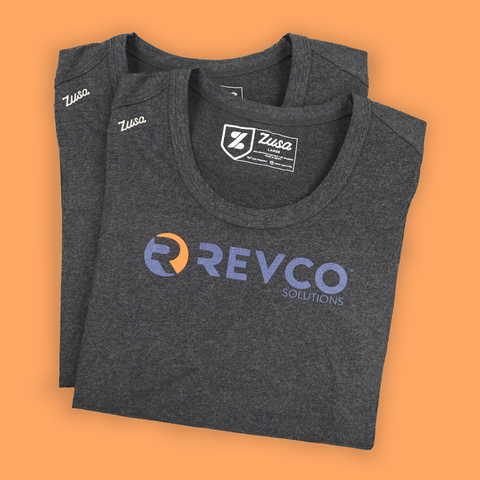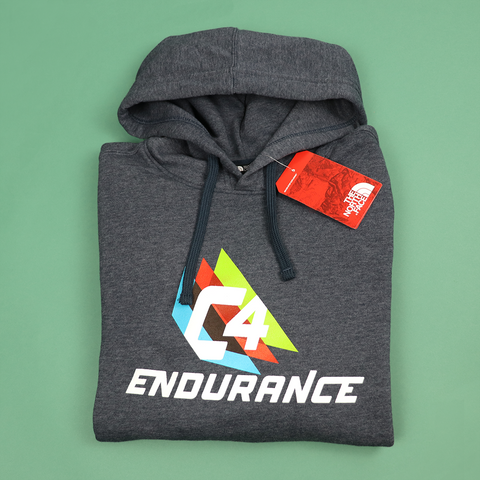Vinyl Heat Transfer Printing Process Explained
Vinyl Heat Transfer Printing Process Explained

Vinyl transfer is actually a subsect of heat transfer printing that uses special transfer paper to apply your company logo or design to a variety of products. Make sure to check out our complete vinyl heat transfer printing capabilities to see how we can help your business grow with custom apparel and accessories.
How Does Vinyl Transfer Work?
Vinyl transfer work in a very similar way as the standard heat transfer printing process. The main differences are the transfer paper used and the settings that are set on the heat press machine. You can find all of this information in our ten step guide below.
Step-by-Step Guide to Vinyl Heat Transfer Printing
- Mock up your design – we use a computer with graphic design software to digitize your corporate logo or custom design.
- Print your logo – your company logo or custom design is printed onto special vinyl heat transfer paper using inkjet ink, pigment ink or sublimation ink depending on the product and application.
- Wash & dry your product – it is important to pre-wash apparel before apply heat transfer printed logos if using a fabric that could shrink and distort the logo or design.
- Fire up the heat press – the heat press is opened, and the heat platen is separated from the heat pad and left open while heating to a temperature between 350 to 375°F.
- Set the pressure – the pressure of the heat press is adjusted based on the thickness of the fabric that the vinyl transfer is being applied to. Thicker fabric = more pressure.
- Set a timer – the time needed to apply the design is different for each type of heat transfer. For vinyl transfers the time is set between 45 and 60 seconds.
- Position the product & transfer paper – your custom apparel is placed face-up on the plate of the heat press with the vinyl transfer paper also positioned face-up under a thin cloth for protection.
- Time to press – we pull the handle down the close the press and clamp it shut. Your time, temperature and pressure are already by set by now, so we can just push start.
- Peel off the film – the vinyl transfer film if carefully removed from the surface of the product to reveal your custom logo or design.
- That’s a wrap – your vinyl heat transfer printed apparel is now complete! All that’s left to do now is check the design for quality, package it up and ship it to your door!
What Equipment is Needed for Vinyl Heat Transfer Printing?
- Heat Press – heat presses come in a few different models depending on the intended use. Swing-away flatbed machines and clam shell presses are used for custom shirts and other flat apparel and accessories. There are also cylindrically shaped presses for transferring designs onto rounded objects like custom water bottles and personalized mugs.
- Heat Resistant Sheeting – these are typically made from Teflon and are placed between the heating platen and transfer paper to prevent the transfer paper from burning and to keep the heat press clean.
- Heat Pads – these special pads are positioned on the lower platen of the press and act as the surface for your product to rest on in the heat transfer process. Heat pads are typically made of heat resistant foam or silicone rubber.
- Computer – a computer with graphic design software is used to render and digitize your corporate logo or design before it’s printed.
- Printer – for the most part, the printers used for vinyl transfers function the same as a standard inkjet printer, just with different ink and special vinyl transfer paper.
- Ink – there are several types of inks used in vinyl heat transfer printing to produce different finishes. Inkjet ink is the most regularly used, because it is the cheapest and most accessible ink type. Pigment ink is also used to prevent fading, while sublimation ink is used for only dye sublimation printing.
- Vinyl Transfer Paper – this is unique paper that is designed specifically for heat transfer and is typically covered in a wax and pigment polymer film. This film makes a permanent bond with the fibers of the fabric when heated.
- Vinyl Cutter – a vinyl cutter can be used to cut out your logo from the transfer paper before it’s applied to the product.
Contact Us!
Now that you know how vinyl heat transfer printing is accomplished, check out our complete vinyl transfer capabilities. Not sure if vinyl transfer is the right personalization technique for your business? Read up on the rest of our Custom Decoration Methods to see our complete customization technique offerings or contact us to get all of your questions answered.



